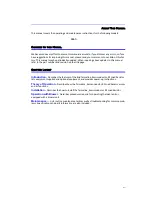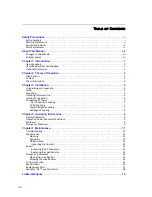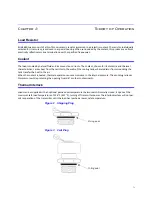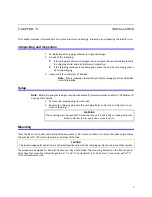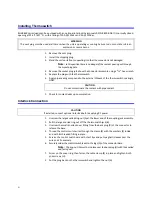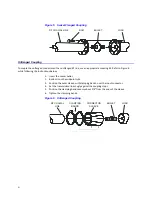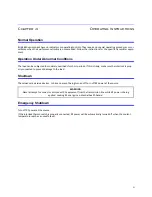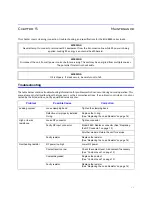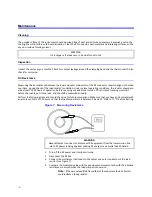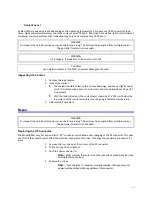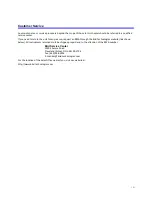
13
Coolant Level
Coolant lifetime will vary greatly depending on the operating temperature. For heavy use (full RF power for long
times, high ambient temperature), check the coolant every 500 hours. If the load has only had light duty (fraction of
full power, low temperature), then inspection may only be necessary every 2,000 hours.
Inspecting the Coolant
1.
Remove the load resistor.
2.
Inspect the coolant.
•
The coolant should be clear, with a faint yellow tinge, and have a slightly sweet
smell. If it is black with a burnt or acrid smell, drain it and add about 2.9 gal (11
L) of coolant.
•
With the load still on end, the coolant level should be 3
5
⁄
8
" (92 mm) below the
top surface of the resistor assembly mounting ring, at ambient temperature.
3.
Add coolant if necessary.
Repair
Replacing the RF Connector
The Model 8860,
only
, has a special Bird “QC” connector which allows easy changing of the RF connector. This does
not disturb the coolant seal or affect the electrical continuity of the load. To change the connector, proceed as fol-
lows:
1.
Remove the four screws at the corners of the RF connector.
2.
Pull the connector straight out.
3.
Push the new connector in.
Note:
Make sure that the center pin on the connector is properly seated in the
mating socket on the load.
4.
Replace the screws.
Note:
If not using the LC connector normally supplied, the frequency and
power must be limited to the capabilities of the connector..
WARNING
Disconnect the unit from all power sources before servicing. The unit may be energized from multiple sources.
The potential for electric shock exists.
WARNING
Oil is slippery. If a leak occurs, be careful not to fall.
CAUTION
Use only Bird coolant, P/N 5-1070, to prevent damage to the load.
WARNING
Disconnect the unit from all power sources before servicing. The unit may be energized from multiple sources.
The potential for electric shock exists.

